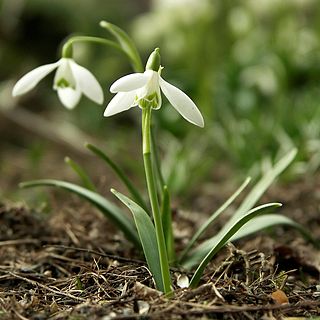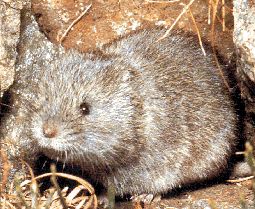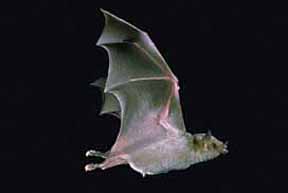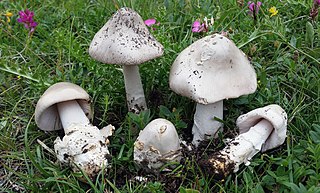
Galanthus, snowdrop is a small genus of approximately 20 species of bulbous perennial herbaceous plants in the family Amaryllidaceae. The plants have two linear leaves and a single small white drooping bell shaped flower with six petal-like (petaloid) tepals in two circles (whorls). The smaller inner petals have green markings.

The snow bunting is a passerine bird in the family Calcariidae. It is an Arctic specialist, with a circumpolar Arctic breeding range throughout the northern hemisphere. There are small isolated populations on a few high mountain tops south of the Arctic region, including the Cairngorms in central Scotland and the Saint Elias Mountains on the southern Alaska-Yukon border, as well as the Cape Breton Highlands. The snow bunting is the most northerly recorded passerine in the world.

Galanthus nivalis, the snowdrop or common snowdrop, is the best-known and most widespread of the 20 species in its genus, Galanthus. Snowdrops are among the first bulbs to bloom in spring and can form impressive carpets of white in areas where they are native or have been naturalised. They should not be confused with the snowflakes, in the genera Leucojum and Acis.

The European snow vole or snow vole is a species of rodent in the family Cricetidae. It has dense, pale grey fur and a pale-coloured tail and can reach about 14 cm (5.5 in) long, with a tail which is 7 cm long.

The greater long-nosed bat or Mexican long-nosed bat is a species of bat in the family Phyllostomidae. It is found in Mexico and the United States. It chiefly consumes pollen and nectar, particularly from Agave plants and cacti. Its habitat includes desert scrub and open woodlands. It is threatened by habitat loss.
The Heard Island shag, or Heard Island cormorant, is a marine cormorant native to the Australian territory comprising the Heard and McDonald Islands in the Southern Ocean, about 4100 km south-west of Perth, Western Australia.
Ologamasidae is a family of mites in the order Mesostigmata.
Gamasellus is a genus of mites in the family Ologamasidae.
Gamasellus davydovae is a species of mite in the family Ologamasidae.
Gamasellus discutatus is a species of mite in the family Ologamasidae.
Gamasellus exiquns is a species of mite in the family Ologamasidae.
Gamasellus lativentralis is a species of mite in the family Ologamasidae.
Gamasellus kurilensis is a species of mite in the family Ologamasidae.
Gamasellus silvaticus is a species of mite in the family Ologamasidae.
Gamasellus tuvinycus is a species of mite in the family Ologamasidae.
Gamasellus venustus is a species of mite in the family Ologamasidae.
Gamasellus volkovi is a species of mite in the family Ologamasidae.
Gamasellus yastrebtsovi is a species of mite in the family Ologamasidae.

Amanita nivalis, the snow ringless amanita or mountain grisette, is a species of basidomycote fungus in the genus Amanita. It was first described by the Scottish mycologist Robert Kaye Greville in 1826 from specimens found growing at high altitudes in the Scottish Highlands. He gave it the Latin epithet nivalis to indicate the alpine type habitat in which he found it growing rather than to describe its white colour.
Luzula nivalis, commonly known as arctic wood-rush or less commonly as snowy wood-rush, is a species of perennial rush native to the North American Arctic and Northern Europe. It was described by Polunin (1940) as one of the most abundant, ubiquitous, and ecologically important of all arctic plants.




